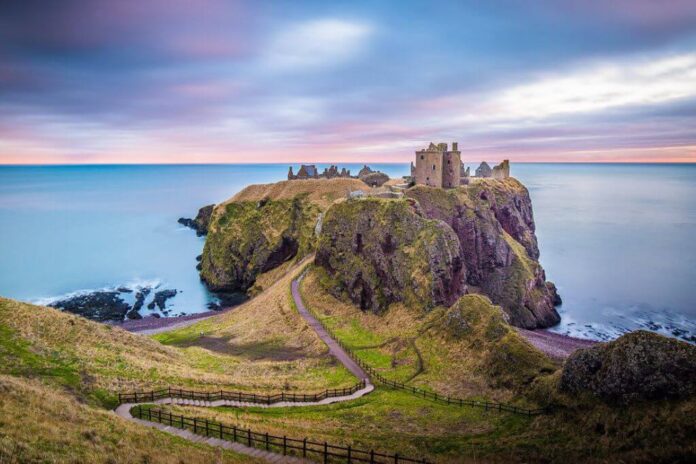Scotland is a popular tourist destination for people from all over the world because of its intriguing heritage and turbulent past, in addition to its award-winning scenery. The following six Scottish ruins serve as examples of how stunning yet depressing Scotland’s structures and history can be.
1. Dunnottar Castle
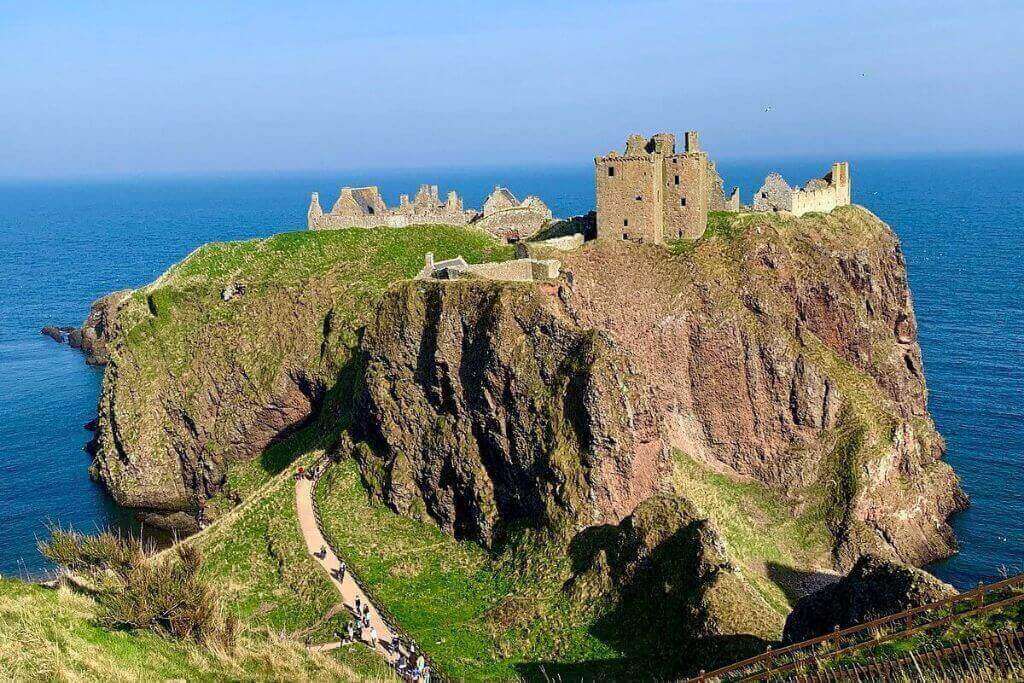
The ruined medieval fortification of Dunnottar Castle, once the residence of the Honours of Scotland—the country’s crown jewels—is an iconic background and one of Scotland’s most breathtaking historical locations. The ruins, which include a dungeon, a rebuilt dining room, a drinking hole, and stables, are raised up by the rugged cliffs of the North Sea.
The Pearson family now looks after the castle, available to visitors in the spring and summer. Dunnottar’s tattered remnants have weathered quite a hammering, from an Oliver Cromwell’s army siege that lasted many months in the 17th century to the ferocious wind and spray of the North Sea.
2. St Peter’s Seminary (Argyll)
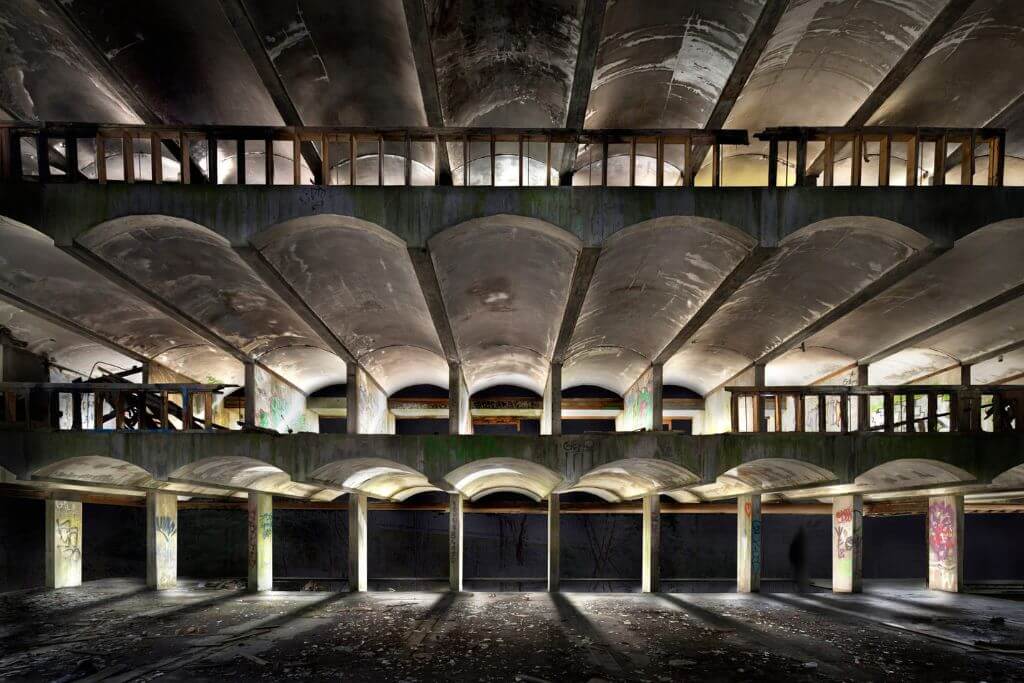
St. Peter’s Seminary, one of Scotland’s most well-known Roman Catholic structures, was built in 1966 and had an interior that combines Brutalist and Le Corbusier influences to accommodate up to 100 priests. It was never able to accommodate that number, and serious problems with water infiltration and the building’s architecture caused it to quickly deteriorate.
The seminary had already closed by 1980 and had been transformed into a drug rehab center, but it too had to close in 1985 due to lingering issues. Three years after it received the A-listed structure status, a fire damaged the structure in 1995.
3. Barnton Quarry Bunker
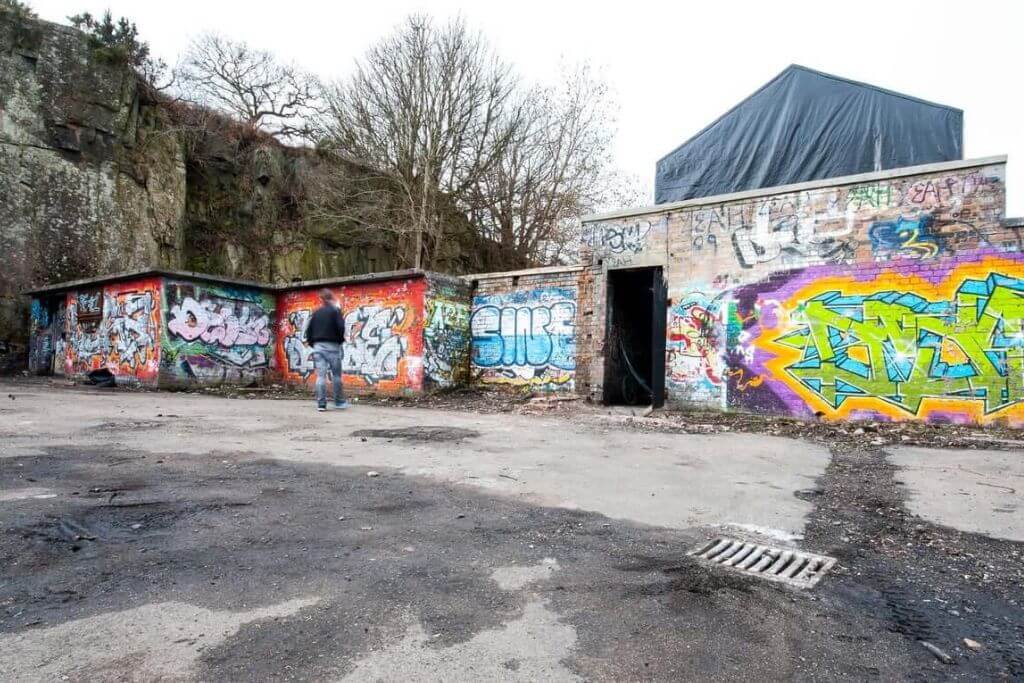
Barnton Quarry Bunker is a Cold War remnant and a covert bunker tucked behind Corstorphine Hill. After serving as RAF Turnhouse’s operations room during World War II, the building was converted into a Regional Seat of Government (RSG) that would house Scotland’s top officials in the event of a nuclear strike.
The base was in use from 1952 until Spies for Peace, an activist group, made the location public 11 years later. The building became hazardous when a fire in 1992 spilled asbestos fibers into its underground levels.
4. Blockships of Scapa Flow

Scapa Flow in Orkney, a sizable, tranquil body of water where the Royal Navy would park its vessels in safety, was fortified with strong defenses during World War I. To prevent German submarines from accessing the area and attacking the ships berthed there, a number of blockships were sunk during both World Wars.
Winston Churchill ordered the construction of the Churchill Barriers to replace the blockships after the sinking at the anchor of HMS Royal Oak in 1939 at the hands of a U-boat that had infiltrated the sound.
5. Inchdrewer Castle (Banff)
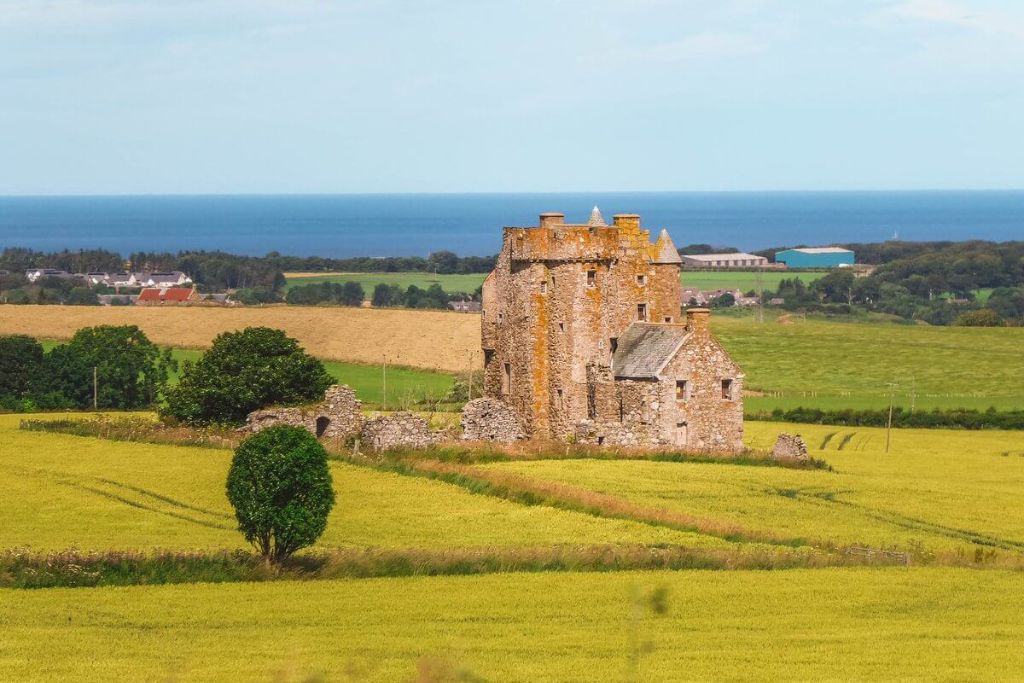
After Inchdrewer Castle was abandoned in the early 1900s and weatherproofed in the 1970s, the A-listed ruin was sold to a private buyer for about £400,000. It is thought to have been constructed in the early 1500s and purchased from the Curror family by Sir Walter Ogilvie of Dunlugas in 1557 based on the historical records that have survived.
Lord Banff remained a resident of the castle until 1713 when he was killed and set afire at Inchdrewer Castle. When the Duke of Cumberland besieged the castle in 1846 while looking for Bonnie Prince Charlie, more bad luck befell the location.
6. St Kilda
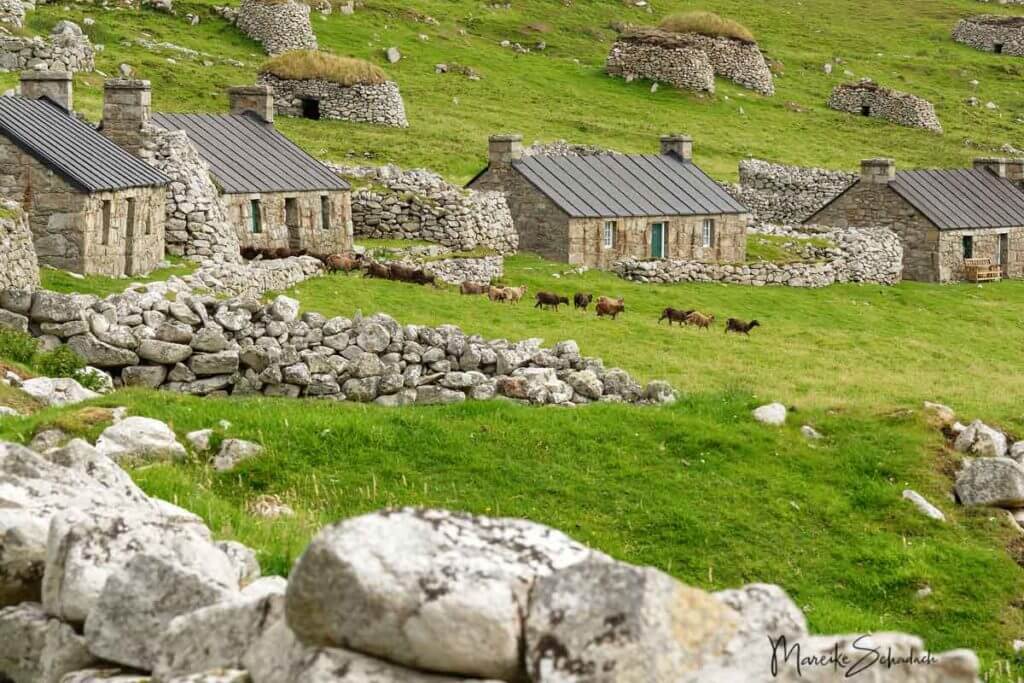
The earliest recognizable residents of St. Kilda, an archipelago located deep in the North Atlantic about 40 miles north of Uist, date to the Iron Age. The last people to live on St Kilda left in 1930; today, the island is home to seabirds, including gannets, fulmars, and puffins. During St. Kilda’s peak population in the late 1600s, some 180 people lived there. The land was afterward rented from the Macleods of Dunvegan in Skye, whose factor would come by once a year to collect rent and sell imported goods.
St. Kildans rapidly lost its ability to provide for itself, and as its citizens relied more and more on imports, they started to view the island as a prison. 36 islanders left for Australia in 1852, but many perished on the journey. The island economy collapsed as a result of more emigration, and 36 people asked to be evacuated to the mainland in 1930.
